Heimdal Member
updated to follow: Stratigraphic Guide to the Rogaland Group, Norwegian North Sea. Harald Brunstad, Felix M. Gradstein, Jan Erik Lie, Øyvind Hammer, Dirk Munsterman, Gabi Ogg, and Michelle Hollerbach. Newsletter on Stratigraphy, vol 46/2 pp137-286, 2013.
Rogaland Group, Lista Formation
Unit definition
The Heimdal Member is attributed to the intra Lista Formation sandstones in subarea NW
in Figs. 1 and 72.
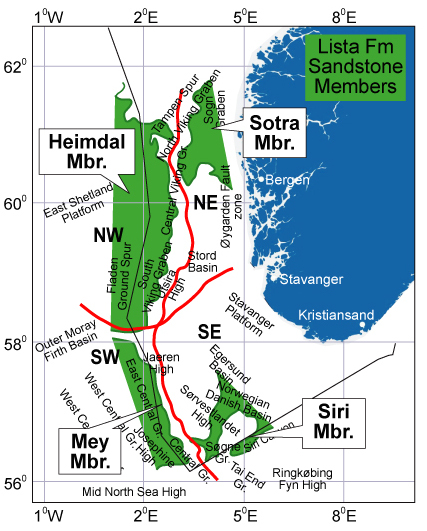 Fig 1: Location map of the Members of the Lista Formation.
Fig 1: Location map of the Members of the Lista Formation. |
Name
The name Heimdal Formation was introduced by Deegan & Scull (1977) for sandstones
age-equivalent to the mudstones of the Lista Formation. Knox & Holloway (1992) redefined
the sandstones of the Heimdal Formation as Heimdal Member. This redefinition is
maintained in this study.
Derivatio nominis
The Heimdal Member (formerly Heimdal Formation) is named after the Norse god Heimdal, one of
Odin's sons.
Type well
Norwegian well 25/4-1 (Fig. 80): Depth 2067-2423m RKB. Coordinates N 59°34'27.30", E 02°13'22.60". Defined
by Hardt et al. (1989).
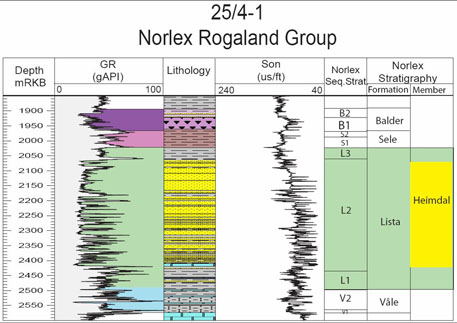
Fig. 80. Well 25/4-1 Composite log Rogaland Group. Stratigraphic position of the
Heimdal Member is outlined in stratigraphic column to the right.
|
Reference wells
Norwegian well 15/9-11 (New, Fig. 81). Depth 2385-2423 m RKB. Coordinates N 58°24'02.53", E 01°53'41.79".
Core 3-4.
Norwegian well 15/9-5 (Fig. 82). Depth 2448-2716 m RKB (revised). Coordinates N 58°24'12.47", E
01°42'29.20". No cores. Defined by Hardt et al. (1989).
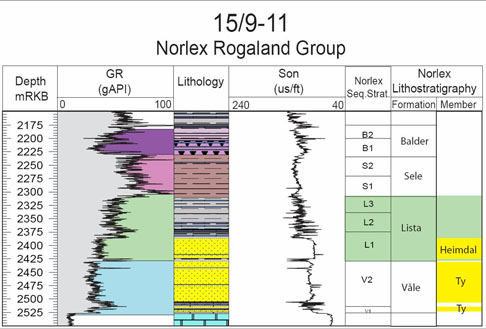
Fig. 81. Well 15/9-11 Composite log Rogaland Group. Stratigraphic position of the
Heimdal Member is outlined in stratigraphic column to the right.
|
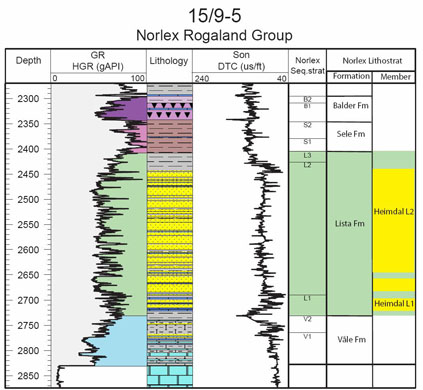
Fig. 82. Well 15/9-5 Composite log Rogaland Group. Stratigraphic position of the
Heimdal Member is outlined in stratigraphic column to the right.
|
Composition
According to Knox & Holloway (1992), the Heimdal Member consists of thick sandstone
units alternating with thinly bedded sandstones and mudstones. A core photo example is
shown in Fig. 83 and a core description example in Fig. 84. The sandstones are friable
to lightly cemented, moderately sorted and of very fine to coarse sand grade. They
include minor and variable amounts of glauconite and are occasionally associated with
thin beds of chalk. The interbedded mudstones are light to medium grey grading to
olivegrey and greengrey. They are poorly bedded, and variably silty and generally
non-calcareous.
Sandstone intrusions are frequently found associated with the upper boundary of
sandstones bodies, often with an abundance of angular and tabular mudstone clasts.
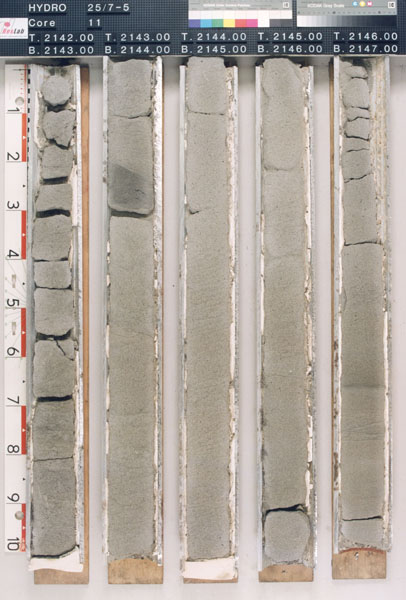
Fig. 83. Core photograph of massive, faintly dish structured sandstones of the Heimdal
Member. Well drilled by Norsk Hydro. Photograph from NPD Fact Pages at
http://www.npd.no.
|
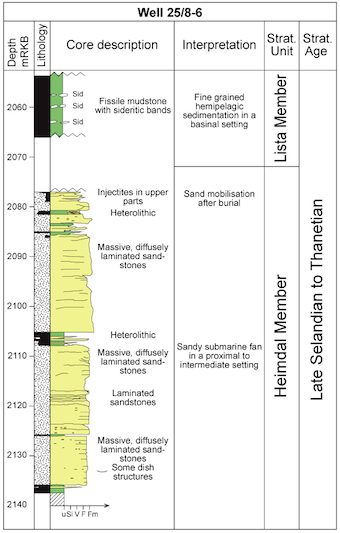
Fig. 84. Core description log from upper parts of the Heimdal Member well 25/8-6.
|
Wireline log characterization
Upper boundary
The Lista Formation usually overlies the Heimdal Member, and the
boundary is
characterised by higher gamma-ray readings and lower velocity upwards into the Lista
Formation. Where the Hermod Member directly overlies the
Heimdal Member, the boundary may be more difficult to define.
Lower boundary
The Heimdal Member overlies the Lista and sometimes the
Våle Formation, and the boundary
is characterised by lower gamma readings and increased velocity upwards from the Lista
or Våle Formation below.
Thickness
The Heimdal Member occurs over much of the Viking Graben, and can attain thickness of
more than 400 m in this area (436 m in well 24/6-2).
Seismic characterization
The seismic pick of the Top Heimdal Member is variable and varies from well defined
positive acoustic impedance to poorly defined or even negative acoustic impedance. The
Heimdal Member is often characterized by a mounded internal
character within an envelope of mapped flooding surfaces or sequence boundaries. Fig. 85
shows a seismic cross section through two major bodies of the Heimdal Member,
representing sand rich submarine fan deposits. Fig. 86 shows a seismic amplitude map of
the uppermost Heimdal sand body in block 15/5, displaying a fan shaped high amplitude
feature. This feature represents the sand rich submarine fan system that is reservoir
rock in the Glitne Field.
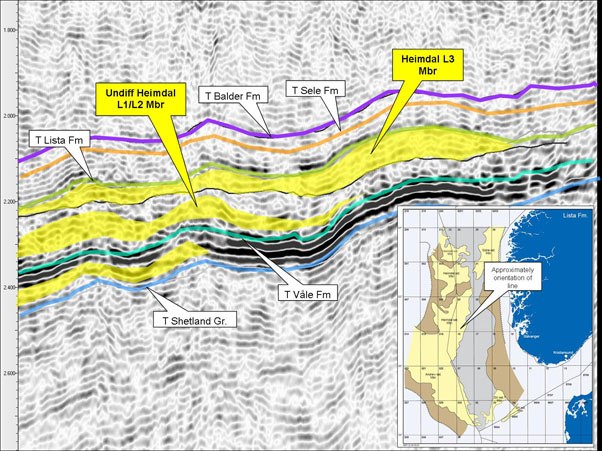
Fig. 85. Seismic WE Line through southern parts of Block 25/10. The line shows partly
mounded thicks. The two uppermost represent sub-members of the Heimdal Member.
|
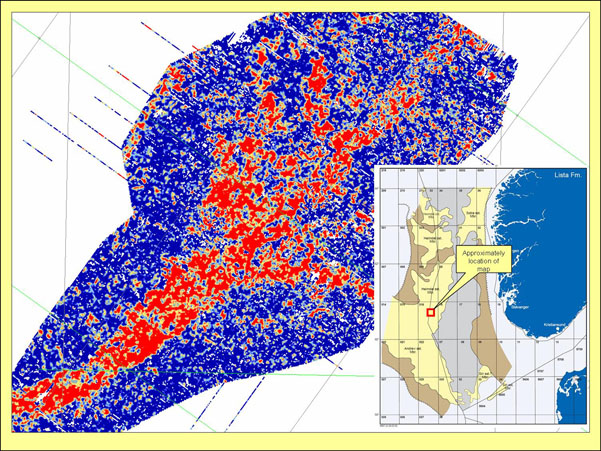
Fig. 86. Seismic amplitude map from an internal event in the Upper part of the Lista Fm
in Block 15/5. Fan shaped anomaly forms the reservoir in the Glitne Discovery, and is
attributed to presence of the Heimdal L3 sub-member.
|
Age
Late Middle to Late Paleocene (Late Selandian to Early Ypresian).
Biostratigraphy and age
The Heimdal Member contains the acme occurrences of A. gippingensis and
P. pyrophorum.
The member is contained within the Lista Formation, thus
corresponding in age to that of the Lista Formation, meaning late Selandian and Thanetian.
Correlation and subdivision
The acme occurrences of A. gippingensis and P. pyrophorum allow further
subdivision of the
Heimdal Member, related to the three-division of Lista, with distinction of Heimdal L1
Sub-members, Heimdal L2 Sub-members and Heimdal L3 Sub-member sandstones.
Geographic distribution
The Heimdal Member is more or less time equivalent to the Mey
Member of the Outer Moray
Firth and Central Graben. Limited interfingering of the two sand fan systems appears to
have taken place over the Fladen Ground Spur (Figs. 1), and they are here
separated along a line of supposed minimum sandstone thickness between the depocentres
of the South Viking Graben and the Fisher Bank Basin (Knox & Holloway, 1992). The
geographical distribution is mainly in the Viking Graben to Shetland Platform, with thin
sands reaching the Viking Graben across the Tampen Spur (Fig. 72).
Depositional environment
The sand rich Heimdal Member was deposited into coalescing sand fan systems. The sands
were mainly transported with high density turbidity flow, depositing thick bodies of
amalgamated sand beds, with minor heterolithic sandstone units being
deposited in inter channel and terminal edge of depositional lobes. Water depths seem to
have reached several hundreds of meters in central parts of the basin.
Hydrocarbon discoveries with Heimdal Member reservoirs
- Balder Field,
- Grane Field
- Jotun Field
- Heimdal Field
- Alvheim Field
- Glitne Field
- Sleipner East Field (part of reservoir)
- 24/12-3 oil discovery
- 16/1-6 gas discovery
- Well 16/4-4 gas and condensate discovery


 Fig 1: Location map of the Members of the Lista Formation.
Fig 1: Location map of the Members of the Lista Formation.




